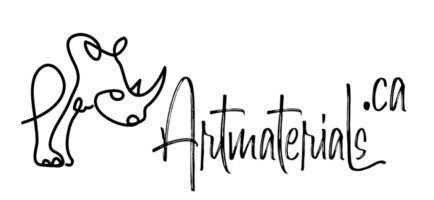When we buy art supplies for children, the first thing we think about is safety. With this in mind we search for “nontoxic” labeled on art and craft supplies for children and easily find it! Let’s learn more what this label really means.
What “nontoxic art and craft supplies for children” mean?
All art supplies for children by retailers located in the USA and Canada must undergo through third party tested certification for toxicity. However, term “toxic” is limited by ingredients that cause “adverse chronic health effects” and “acute and/or chronic health hazard”.
One of the most common organization that certifies products internationally is Art & Creative Materials Institute, Inc. (ACMI). Their certification split products into two categories:
- The AP (Approved Product) – art materials that are safe and that are certified by a medical expert to contain no materials in sufficient quantities to be toxic or injurious to people or to cause acute or chronic health problems..
- The CL (Cautionary Labeling) Seal – products that are certified to be properly labeled for any known health risks and with information on the safe and proper use of these materials. The CL seal is not allowed on any children’s materials.

Everything sounds very good and if you look at AP label you can safely use it for children, of for yourself. We thought the same way before we realized some other things… We found AP label on paints (especially sets) containing cadmiums, cobalts, ammonia, formalin, ethylene glycol and other chemicals. If paints with some of these chemicals are to be sold in California, they may have special “warning” labelling.
Where to find more information?
Normally, all art supplies should accompany with Manufacture’s Safety Data Sheets (MSDS), where composition and chemicals have to be disclosed. However, most manufacturers keep a list of ingredients secret and MSDS contain only general information, like “no hazard known”.
For example, the biggest supplier of children art materials in North America, Crayola, doesn’t show ingredients at all. We even can’t tell what kind of pigments are there and what they use to prevent paints from growing mold. You can find MSDS here: https://www.crayola.ca/about-us/crayola-msds.aspx
There are many reasons why manufacturers hide ingredients, from literally hiding something to just protecting themselves from competitors. RUSART finds this practice dishonest and as children may use paints and other supplies in many ways, including licking and painting on their skin, knowing a full list of components is very important.
Why knowing ingredients of paints IS important?
Nontoxic is not always nontoxic
First of all, term “toxic” is much broader than standards determine. Even ASTM D-4236, the standard practice of labeling art materials for chronic health hazards, is saying that “1.8 This standard does not purport to address all of the safety concerns, if any, associated with its use. It is the responsibility of the user of this standard to establish appropriate safety and health practices and determine the applicability of regulatory limitations prior to use.”
That means, even if you see a label “conformed to ASTM D-4236”, you and yourself are in charge of use of the product. That’s your responsibility if something goes wrong.
Misuse can occur
Secondly, all art and craft paints are assumed to be used properly. So, paints – for painting on paper (or other listed support), pencils – for drawing and paper etc. But what if your child accidentally ingests paints? And that’s a very common paint “misuse”.
A lot of paints for children contain dextrin and corn starch as a filler, so paints may taste yummy for them to lick. As a white colour or as a filler companies use titanium or zinc oxides. Titanium oxide is quite safe chemical (read more in our knowledge base), but zinc oxide when ingested may cause some unwanted effects.
Cadmiums and cobalts usually are not an issue for kids paints for economical reasons. These pigments are so expensive, that manufactures would never use them for children.
Hidden chemicals
Another big issue is formalin, which is a very commonly used preservative in paints. In some countries, such as EU and Russia, it’s legally prohibited to use it in paint-manufacturing. But it’s not prohibited to sell paints containing formalin. That’s why, when you buy non-toxic paints from China, no one can guarantee they have no formalin. Similar issue you can find with phthalates.
Allergies
And, what’s very important, that’s even paints come out absolutely non-toxic, they still can cause allergies. And knowing a list of ingredients helps a lot. Paints for children may contain wheat, honey, and other allergens. These ingredients are essential for natural paints but should be avoided with those who has certain allergies.
Conclusion
- Non-toxic label doesn’t guarantee that a products is really “non-toxic”
- Check with MSDS
- Choose art materials that disclose lists of ingredients
- Stay informed with RUSART Newsletter



